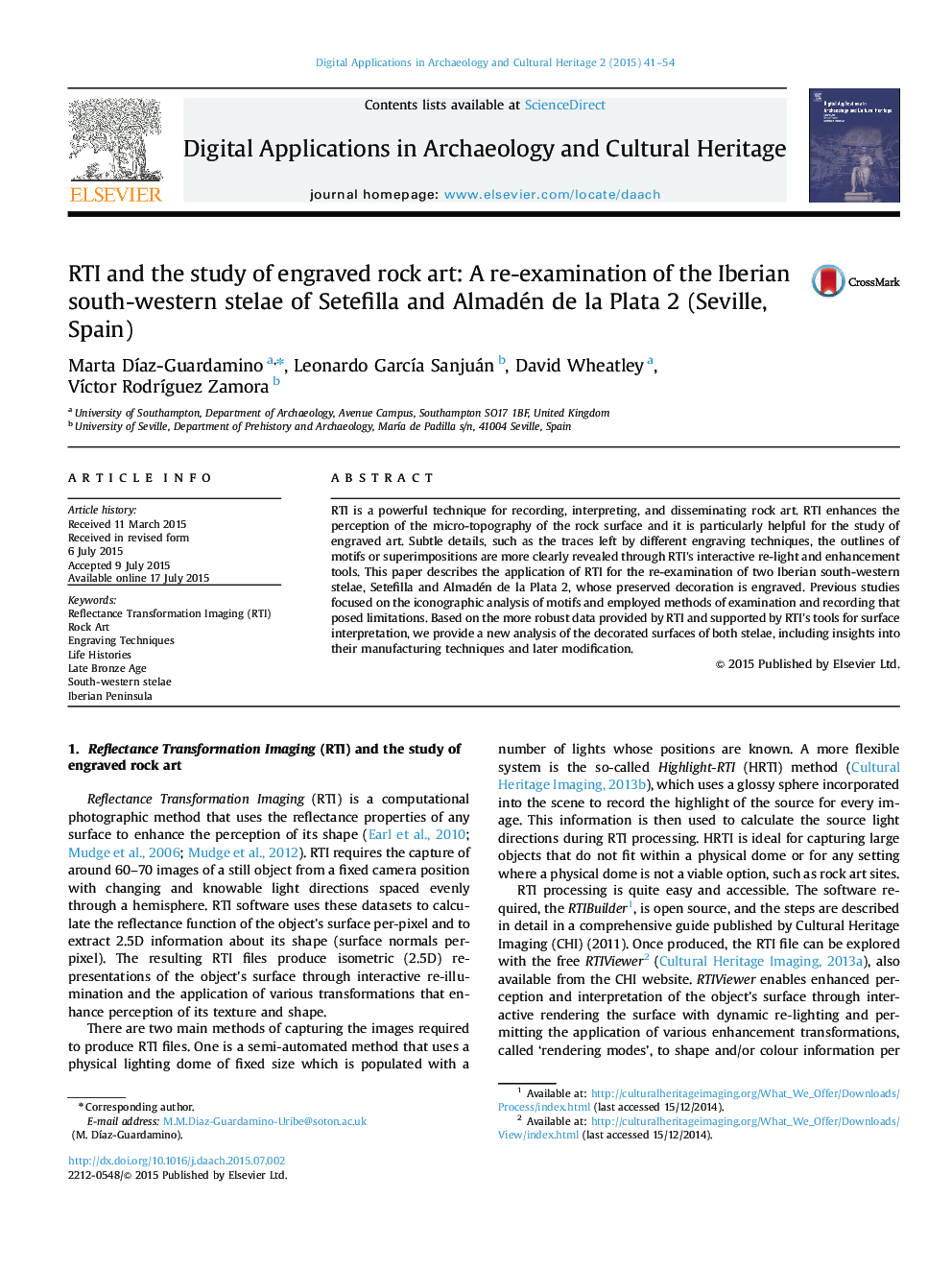| کد مقاله | کد نشریه | سال انتشار | مقاله انگلیسی | نسخه تمام متن |
|---|---|---|---|---|
| 108038 | 161835 | 2015 | 14 صفحه PDF | دانلود رایگان |
• RTI produces a robust record of rock art containing shape and colour information.
• RTIViewer tools enhance the perception of the shape of the rock surface.
• We argue that RTI is particularly useful for the interpretation of engraved rock art.
• RTI is applied to examine surface marks, their production and eventual superimposition.
• New motifs, varying techniques and later modifications are revealed in two Iberian south-western stelae.
RTI is a powerful technique for recording, interpreting, and disseminating rock art. RTI enhances the perception of the micro-topography of the rock surface and it is particularly helpful for the study of engraved art. Subtle details, such as the traces left by different engraving techniques, the outlines of motifs or superimpositions are more clearly revealed through RTI's interactive re-light and enhancement tools. This paper describes the application of RTI for the re-examination of two Iberian south-western stelae, Setefilla and Almadén de la Plata 2, whose preserved decoration is engraved. Previous studies focused on the iconographic analysis of motifs and employed methods of examination and recording that posed limitations. Based on the more robust data provided by RTI and supported by RTI's tools for surface interpretation, we provide a new analysis of the decorated surfaces of both stelae, including insights into their manufacturing techniques and later modification.
Journal: Digital Applications in Archaeology and Cultural Heritage - Volume 2, Issues 2–3, 2015, Pages 41–54
